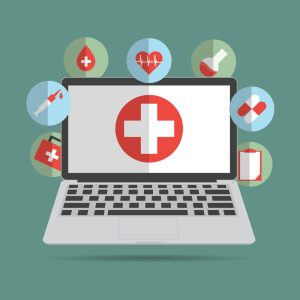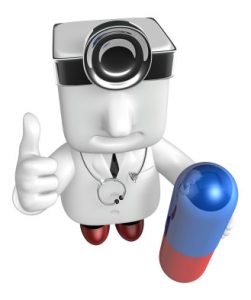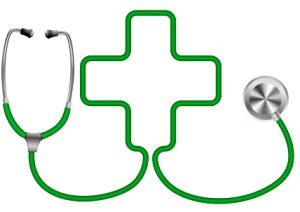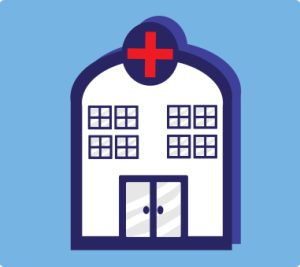By – James M. Katz, BA
Health care case management plays a crucial role in modern healthcare systems, bridging the gap between patients and complex medical services. This specialized field has a significant impact on patient outcomes, resource allocation, and the overall quality of care. As healthcare becomes increasingly intricate, case managers serve as vital advocates, coordinators, and navigators for clients navigating the often-overwhelming landscape of medical treatments and services.
The ethical dimensions of healthcare case management are at the forefront of this profession, shaping every aspect of a case manager’s work. From respecting client autonomy to ensuring fair access to healthcare resources, ethical considerations are woven into the fabric of daily practice. This article delves into the essential ethical practices in health care case management, exploring key principles such as beneficence, nonmaleficence, and veracity. It also examines the challenges case managers face when dealing with ethical dilemmas and offers insights on making sound ethical decisions in complex healthcare scenarios.
Key Takeaways
- Understanding key ethical principles like autonomy and justice is essential for effective case management.
- Patient-related dilemmas, such as confidentiality and informed consent, require careful navigation to protect patient rights.
- Provider-related challenges, including conflicts of interest, need attention to maintain professional integrity.
- A strong organizational culture can promote ethical awareness and provide guidelines for decision-making.
- Emerging issues like telemedicine and AI present new ethical challenges that healthcare managers must address.
Ethical Foundations of Case Management
Health care case management is built upon a strong ethical framework that guides professionals in their decision-making processes and interactions with clients. This foundation is crucial for ensuring that case managers provide high-quality, client-centered care while navigating the complex healthcare landscape.
Core Ethical Principles
The ethical foundations of case management are rooted in five core principles: autonomy, beneficence, nonmaleficence, justice, and veracity. These principles, popularized by ethics scholars Tom Beauchamp and James Childress, serve as the cornerstone for ethical practice in healthcare case management.
Autonomy refers to respecting clients’ right to make their own decisions about their health care. Case managers must advocate for their clients’ independence and self-determination, fostering an environment where clients can exercise control over their treatment options. Beneficence involves acting in the best interests of clients and maximizing their benefits. This principle requires case managers to continuously evaluate their decisions to ensure they uphold client advocacy, even when faced with cost constraints and limited healthcare resources. Nonmaleficence, often summarized as “do no harm,” obligates case managers to refrain from actions that could potentially harm their clients. This principle extends beyond physical harm and includes protecting clients from emotional, financial, or other forms of harm that may result from negligence or poor decision-making.
Justice in case management emphasizes fair and equitable treatment for all clients. This principle ensures that case managers provide access to resources and services based on individual needs, regardless of socioeconomic status, ethnicity, or other personal characteristics. Veracity, or truthfulness, is essential in building trust between case managers and their clients. This principle requires honest communication and the sharing of accurate, clear, and understandable information.
Professional Codes of Ethics
Case managers are guided by professional codes of ethics that provide specific guidelines for ethical conduct. The Case Management Society of America (CMSA) has established Standards of Practice that emphasize the case manager’s role as a client advocate. These standards clearly state that when conflicts arise, the needs of the client must take priority over other considerations.
The National Association of Case Management (NACM) has also developed a comprehensive Code of Ethics that outlines the commitments case managers must make to their clients, profession, and colleagues. This code addresses various aspects of ethical practice, including respect for client dignity, promotion of self-determination, and the importance of maintaining professional boundaries.
Legal and Regulatory Considerations
Case managers must be well-versed in the legal and regulatory frameworks that govern their practice. This knowledge is crucial for making ethical decisions that align with legal requirements and protect both clients and case managers from potential liabilities. Key legal considerations include maintaining client confidentiality, reporting suspected abuse, and complying with HIPAA regulations. Case managers must also be aware of state and federal laws that protect clients’ rights and act in accordance with these laws.
Understanding the legal implications of their actions helps case managers navigate ethical dilemmas more effectively. For instance, when faced with situations where an insurance company’s actions may violate a client’s legal rights, case managers have an ethical duty to inform the client and advocate for their interests. By adhering to these ethical foundations, professional codes, and legal requirements, case managers can provide compassionate, fair, and effective care that prioritizes client well-being while navigating the complex healthcare system.
Respecting Client Autonomy in Practice
Respecting client autonomy is a fundamental ethical principle in health care case management. It involves recognizing and supporting the client’s right to make their own decisions about their health care. Case managers play a crucial role in fostering client autonomy by providing information, guidance, and support while respecting the client’s values and preferences.
Promoting Self-Determination
Self-determination is at the heart of client autonomy in health care case management. Case managers have a responsibility to empower clients to make informed decisions about their care. This involves providing clients with comprehensive information about their health condition, treatment options, and potential outcomes. By doing so, case managers enable clients to actively participate in their care planning and decision-making processes.
To promote self-determination, case managers can employ various strategies. One effective approach is the use of motivational interviewing techniques to uncover the client’s real concerns and address them appropriately. Additionally, case managers can involve members of the client’s support system in discussions, with the client’s consent, to provide a more comprehensive perspective on the situation.
Addressing Capacity Concerns
While respecting client autonomy is crucial, it is equally important to address capacity concerns when they arise. Case managers must be able to assess a client’s cognitive ability to understand, reason about, and appreciate the nature and likely consequences of their decisions. In situations where a client’s capacity is compromised, case managers have a duty to protect the client from potential harm.
When working with clients who lack judgmental capacity or have been legally declared incompetent, case managers must ensure that they coordinate care with the client’s legally authorized surrogate or proxy. This approach helps maintain ethical standards while still respecting the client’s rights and best interests.
Supporting Shared Decision-Making
Shared decision-making (SDM) is a collaborative approach that has gained prominence in health care case management. It involves a partnership between the client and the case manager, where they work together to figure out the best course of action based on the client’s situation, preferences, and available evidence. SDM is not just another task for case managers to complete; rather, it is a method of care that is central to the case manager’s role. It involves fostering conversations that invite collaboration and lead to the formulation of a co-developed care plan. This process requires case managers to be curious and work to understand which aspects of the client’s situation require action.
To support SDM effectively, case managers can use specialized tools designed to facilitate these conversations. These tools can help clients and case managers select treatments together to reduce the risk of adverse outcomes. However, it is important to note that SDM should not be reduced to simply distributing these tools; it requires active engagement and collaboration between the case manager and the client.
By implementing these practices, case managers can effectively respect client autonomy while providing high-quality, ethical care. This approach not only empowers clients but also strengthens the relationship between the case manager and the client, leading to better outcomes and more satisfying healthcare experiences.
Beneficence: Maximizing Client Benefits
Beneficence, a core ethical principle in health care case management, emphasizes the commitment to act in the best interests of clients and maximize their benefits. This principle guides case managers in their efforts to provide high-quality, client-centered care while navigating the complex healthcare landscape.
Identifying Client Needs
The first step in maximizing client benefits is accurately identifying their needs. Case managers employ a comprehensive assessment process to gather information about the client’s health status, social circumstances, and personal goals. This assessment serves as the foundation for developing a tailored care plan that addresses the client’s unique requirements.
During the intake and needs assessment stages, case managers collect demographic information, identify immediate needs, and establish trust with the client. This process goes beyond surface-level data collection, delving into the client’s challenges, interests, and potential risks to success. By conducting thorough assessments, case managers can better understand the client’s situation and develop strategies to maximize their benefits.
Advocating for Appropriate Services
Once client needs are identified, case managers play a crucial role in advocating for appropriate services. This involves navigating the healthcare system, coordinating care across multiple providers, and ensuring clients have access to necessary resources. Case managers act as a bridge between clients and the complex set of services available within benefit plans, organizations, and communities.
Advocacy in case management extends to various activities, including:
1. Facilitating timely access to care
2. Coordinating transitions between care settings
3. Communicating with payers to obtain authorizations for treatments and services
4. Educating clients about their rights, health care services, and available resources
5. Promoting shared decision-making and informed consent
By actively advocating for their clients, case managers help ensure that individuals receive the most appropriate and beneficial care possible.
Balancing Short-term and Long-term Benefits
One of the key challenges in maximizing client benefits is striking a balance between short-term needs and long-term goals. Case managers must consider both immediate concerns and the overall trajectory of the client’s health and well-being.
Short-term adaptations often involve quick fixes or temporary solutions to address urgent issues. These may include taking on additional work tasks or responsibilities to ensure quality of care in peak situations. While these adaptations can be valuable in the moment, they are not intended to permanently change the system and may require repeated actions to address similar challenges in the future.
Long-term solutions, on the other hand, focus on re-organizing and re-designing routines and practices to address systemic issues. These adaptations and innovations have the potential to create lasting improvements in client care and outcomes. Case managers should strive to implement long-term solutions whenever possible, as they can provide a proactive response to system deficiencies and contribute to the overall resilience of healthcare services.
To effectively balance short-term and long-term benefits, case managers can:
1. Develop comprehensive care plans that address both immediate needs and long-term goals
2. Regularly reassess client needs and adjust plans accordingly
3. Collaborate with interdisciplinary teams to implement sustainable solutions
4. Advocate for system-level changes that improve care delivery and resource allocation
By focusing on both short-term adaptations and long-term innovations, case managers can maximize client benefits while contributing to the overall improvement of healthcare services.
In conclusion, the principle of beneficence guides case managers in their efforts to maximize client benefits through careful needs assessment, effective advocacy, and balanced decision-making. By prioritizing client well-being and striving for both immediate and long-term improvements, case managers play a vital role in enhancing the quality and effectiveness of health care case management.
Nonmaleficence: Minimizing Harm in Case Management
The principle of nonmaleficence, often summarized as “above all, do no harm,” is a cornerstone of ethical practice in health care case management. This principle obligates case managers to refrain from causing harm to their clients while providing care and support. In the complex landscape of healthcare, where multiple stakeholders and competing interests often intersect, adhering to nonmaleficence requires vigilance, ethical decision-making, and a commitment to client well-being.
Recognizing Potential Harms
Case managers must be adept at identifying potential sources of harm in their practice. These harms can manifest in various forms, including physical, emotional, financial, or social consequences for the client. For instance, failing to comply with relevant standards described in the Code of Professional Conduct for Case Managers can lead to unintended harm. Case managers should be particularly mindful of situations where their personal feelings or biases might negatively impact client care. Ignoring client questions, lecturing, or feeling a strong aversion to communicating with challenging clients can all compromise the quality of care and potentially harm the client-case manager relationship.
Ethical Risk Management
To uphold the principle of nonmaleficence, case managers must engage in ethical risk management practices. This involves proactively identifying, assessing, and mitigating risks that could lead to client harm. Effective risk management in healthcare encompasses clinical and administrative systems, processes, and reports employed to detect, monitor, assess, mitigate, and prevent risks.
Case managers should prioritize patient safety and work towards reducing medical errors that could jeopardize an organization’s ability to achieve its mission. This may involve participating in sentinel event investigations, which are crucial for addressing immediate patient safety issues and reducing future risks. By fostering a culture of transparency and encouraging reporting of adverse events, case managers can contribute to the development of prevention measures and best practices.
Addressing Challenging Client Behaviors
One of the most significant challenges in upholding nonmaleficence is managing difficult client behaviors. Case managers may encounter clients who are controlling, overly critical, demanding, angry, manipulative, or even threatening. In such situations, it’s essential to remain calm and objective, avoiding defensive reactions that could escalate conflicts or compromise care quality.
To effectively address challenging behaviors, case managers can employ several strategies:
1. Practice empathic communication: Validate the client’s feelings and express understanding of their perspective, even if it feels unfair.
2. Set clear boundaries: Establish limits on aggressive or inappropriate behavior while assuring the client that the healthcare team is working in their best interests.
3. Reframe resistance: Instead of confronting client resistance head-on, acknowledge and even praise it as a form of self-advocacy.
4. Seek peer support: Discussing challenging cases with colleagues, while respecting confidentiality, can provide valuable insights and emotional support.
5. Consider termination when necessary: In extreme cases where the client-case manager relationship has become irreparably damaged, it may be in the client’s best interest to transfer their care to another professional.
By implementing these strategies, case managers can minimize the risk of harm while maintaining a professional and supportive relationship with their clients. Ultimately, the goal is to provide ethical, client-centered care that prioritizes the well-being and safety of individuals navigating the complex healthcare system.
Promoting Justice in Healthcare Access
Promoting justice in healthcare access is a critical aspect of health care case management. Case managers play a vital role in addressing healthcare disparities and advocating for equitable policies to ensure all individuals have access to quality care.
Addressing Healthcare Disparities
Healthcare disparities are preventable differences in the burden of disease, injury, violence, or opportunities to achieve optimal health experienced by socially disadvantaged groups. Case managers are uniquely positioned to address these challenges as they serve as a bridge between healthcare providers and patients. They work to identify and eliminate barriers to care, such as inadequate access to basic needs, mental health issues, substance abuse problems, and health literacy concerns.
One significant barrier to healthcare access is the lack of culturally competent care. Many patients, especially those from minority groups, may feel more comfortable working with providers who understand their cultural background and experiences. Case managers can help by advocating for diverse healthcare teams and promoting cultural sensitivity training for healthcare professionals.
Advocating for Equitable Policies
Case management leaders play an integral role in identifying gaps in community healthcare services and working to organize networks and collaboratives to address these issues. They can advocate for policies that promote equitable healthcare access at local, state, and national levels. This may involve supporting initiatives to expand Medicaid funding and enrollment, which can significantly improve access to care for underserved populations.
Advocacy efforts should also focus on addressing social determinants of health, such as housing, education, and economic opportunities. Case managers can collaborate with community development organizations to implement comprehensive approaches that address both health and socioeconomic factors contributing to disparities.
Balancing Individual and Societal Needs
One of the challenges in promoting justice in healthcare access is balancing individual needs with broader societal concerns. Case managers often face ethical dilemmas when allocating limited healthcare resources. They must consider factors such as cost-effectiveness, quality of life, and long-term outcomes when making decisions about care.
In some cases, case managers may need to advocate for experimental treatments or costly interventions that could significantly benefit individual patients. However, they must also consider the broader implications of such decisions on the healthcare system and society as a whole. This requires careful ethical deliberation and a commitment to transparency in decision-making processes.
To address these challenges, case managers can employ strategies such as shared decision-making, which involves collaborating with patients and their families to develop care plans that align with individual values and preferences while considering available resources. Additionally, case managers should stay informed about emerging healthcare policies and participate in discussions about resource allocation to ensure that ethical considerations are at the forefront of healthcare decision-making.
By focusing on addressing healthcare disparities, advocating for equitable policies, and balancing individual and societal needs, case managers can play a crucial role in promoting justice in healthcare access. Their efforts contribute to a more equitable healthcare system that strives to provide quality care to all individuals, regardless of their socioeconomic status or background.
Veracity and Ethical Communication Practices
Veracity, the ethical principle of truthfulness, plays a crucial role in health care case management. It obligates case managers to communicate honestly with clients, their support systems, and professional colleagues. Adhering to this principle adds value to both the case manager and the clients they serve.
Importance of Truthful Disclosure
Truthful disclosure is grounded in respect for client autonomy and the right to self-determination. By providing accurate, clear, and understandable information, case managers enable clients to make informed decisions about their care. This practice aligns with the principles of patient empowerment, shared decision-making, and client-centered care, which are fundamental to effective case management.
Veracity also contributes to building trust between case managers and clients. When case managers practice habitual truthfulness, they establish credibility and earn the respect of their clients and professional colleagues. This trust is essential for developing strong therapeutic relationships and improving overall clinical outcomes.
Addressing Sensitive Information
While truthfulness is paramount, case managers must also navigate situations where clients may not want to know the full truth about their condition or prognosis. In such cases, respecting the client’s wishes does not violate the principle of veracity. Case managers must balance the ethical obligation to provide truthful information with the client’s right to refuse information.
When dealing with sensitive information, case managers should consider the following:
1. Assess the client’s readiness to receive information
2. Use clear, jargon-free language to explain complex medical concepts
3. Provide information gradually, allowing time for the client to process and ask questions
4. Offer emotional support and resources to help clients cope with difficult news
Managing Communication Challenges
Case managers often face challenges in maintaining veracity while addressing the diverse needs of clients and their families. Cultural differences, language barriers, and varying levels of health literacy can complicate truthful communication. To overcome these challenges, case managers should:
1. Develop cultural competence to understand and respect diverse perspectives on truth-telling
2. Use professional interpreters when language barriers exist
3. Tailor communication strategies to the client’s level of understanding and preferences
4. Collaborate with interdisciplinary teams to ensure consistent and accurate information sharing
In situations where clients lack decision-making capacity, case managers must work closely with legally authorized representatives while still striving to honor the client’s known wishes and values.
Veracity in health care case management extends beyond direct client interactions. Case managers must also maintain truthfulness in documentation, reporting, and communication with other healthcare providers and stakeholders. This includes accurately representing client needs, avoiding omissions or distortions of information, and promptly addressing any errors or misunderstandings that may arise.
By prioritizing veracity and ethical communication practices, case managers can enhance the quality of care, promote client autonomy, and uphold the integrity of the case management profession. These practices are essential for navigating the complex ethical landscape of healthcare and ensuring the best possible outcomes for clients.
Ethical Decision-Making in Complex Cases
Health care case management often involves navigating complex ethical dilemmas that require careful consideration and a structured approach to decision-making. Case managers frequently encounter situations where multiple stakeholders’ interests intersect, and competing values come into play. To address these challenges effectively, case managers must be well-versed in ethical principles and decision-making frameworks.
Identifying Ethical Dilemmas
Recognizing ethical issues is the first step in addressing them. Case managers may face dilemmas such as balancing client autonomy with beneficence, managing conflicts between client needs and organizational policies, or addressing disparities in healthcare access. For instance, a case manager might encounter a situation where a client’s desire to return to work conflicts with medical recommendations, or where limited resources necessitate difficult choices in care allocation.
To identify ethical dilemmas, case managers should be attuned to situations that involve competing values or potential harm to clients. They must also be aware of their own biases and how these might influence their perception of ethical issues. Developing this awareness requires ongoing reflection and a commitment to ethical practice.
Applying Ethical Frameworks
Once an ethical dilemma has been identified, case managers can apply ethical frameworks to guide their decision-making process. The principles of autonomy, beneficence, nonmaleficence, justice, and veracity, as popularized by ethics scholars Tom Beauchamp and James Childress, serve as a foundation for ethical analysis in healthcare case management.
These principles can be applied systematically to evaluate the ethical implications of different courses of action. For example, when considering a client’s treatment options, a case manager might weigh the principle of autonomy (respecting the client’s right to make their own decisions) against beneficence (acting in the client’s best interest) and nonmaleficence (avoiding harm).
Case managers can also utilize decision-making models that provide a step-by-step approach to ethical reasoning. These models typically involve gathering relevant information, identifying the ethical issues at stake, considering alternative courses of action, and evaluating the potential consequences of each option.
Consulting Ethical Resources
When faced with particularly complex or challenging ethical dilemmas, case managers should not hesitate to seek additional guidance. Many healthcare organizations have ethics committees or consultation services that can provide valuable insights and support in ethical decision-making. Case managers can also consult professional codes of ethics, such as those provided by the Case Management Society of America (CMSA) or the Commission for Case Manager Certification (CCMC). These codes offer guidelines for ethical conduct and can serve as a reference point when navigating difficult situations.
Additionally, case managers should stay informed about relevant laws and regulations that may impact their ethical decision-making. This includes understanding patient rights, privacy laws, and legal requirements related to healthcare delivery and case management practice. Continuing education in ethics is essential for case managers to maintain their competence in addressing ethical challenges. Participating in ethics training, attending workshops, and engaging in discussions with colleagues can help case managers refine their ethical reasoning skills and stay current with evolving ethical issues in healthcare.
By developing a strong foundation in ethical principles, utilizing decision-making frameworks, and leveraging available resources, case managers can approach complex ethical dilemmas with confidence and integrity. This approach not only supports better outcomes for clients but also contributes to the overall ethical climate of healthcare organizations and the broader healthcare system.
Conclusion
The ethical practices in health care case management have a profound influence on patient outcomes and the overall quality of care. Case managers play a crucial role to navigate the complex healthcare landscape, balancing the principles of autonomy, beneficence, nonmaleficence, justice, and veracity. By upholding these ethical standards, case managers not only advocate for their clients but also contribute to a more equitable and effective healthcare system.
To wrap up, the field of health care case management continues to evolve, presenting new challenges and opportunities to improve patient care. Case managers must stay committed to ongoing ethical education and reflection to address these challenges effectively. By fostering a culture of ethical decision-making and promoting justice in healthcare access, case managers can make a lasting impact on the lives of their clients and the healthcare system as a whole.
If you’re in the healthcare or nursing field and would like to expand your career to Case Management then our Fellowship in Case Management Certification program might be for you! You would need to complete 5 online case management courses then submit the online application along with your prerequisite documentation. After that is completed you would then be Certified as a Case Manager with a Fellowship status for a period of 4 years. If this is something you’re interested in, please visit our Case Management program webpage here.
FAQs
- What are the key ethical considerations in case management?
Case managers are expected to conduct themselves legally, ethically, and morally, adhering strictly to their professional code. This includes maintaining the integrity of the code and avoiding any actions that could harm others or exploit relationships with clients for personal gain. - Which ethical principles are crucial for case managers to uphold?
Case managers must be particularly sensitive to the principles of autonomy, beneficence, nonmaleficence, justice, and veracity. Autonomy involves respecting the personal liberty of individuals to make their own decisions based on their personal plans. - What are the fundamental principles outlined in the code of ethics for case management?
The code of ethics for case management primarily revolves around the principles of autonomy, beneficence, nonmaleficence, and justice. These principles guide how case managers should approach their practice in healthcare settings. - What common ethical dilemmas do healthcare managers face?
Healthcare managers frequently encounter ethical issues related to confidentiality, informed consent, and patient relationships. These issues can arise unexpectedly and are complicated by legal and ethical standards that may change over time. Managers also face the risk of legal action for negligence or malpractice. - What are the key ethical principles in health care case management?
The main ethical principles include autonomy (respecting patient choices), beneficence (doing good for patients), non-maleficence (avoiding harm), and justice (fair treatment for all). - How do patient rights affect case management decisions?
Patient rights are crucial as they ensure that patients have a say in their care, including informed consent and privacy. Case managers must respect these rights when making decisions. - What are some common ethical dilemmas faced by health care providers?
Common dilemmas include issues of confidentiality, informed consent, and making decisions about end-of-life care. - How can health care organizations promote ethical decision-making?
Organizations can promote ethics by providing training, having clear guidelines, and creating a culture that values ethical discussions. - What role does technology play in ethical issues in health care?
Technology, like telemedicine and AI, brings new ethical challenges such as privacy concerns and the need for informed consent. - What strategies can help resolve ethical dilemmas in health care?
Strategies include ongoing education, developing clear policies, and encouraging teamwork in decision-making.
Research Articles:
COVID-19, ethics of care and feminist crisis management. Layla J. Branicki. Volume27, Issue5 Feminist Frontiers Special Issue: Gendered labor and work, even in pandemic times. September 2020. Pages 872-883
Access link here
Ethics in contemporary health care management and medical education. Naci Balak MD, Et Al. Evaluation in Clinical Practice. Volume26, Issue3.
June 2020. Pages 699-706
Access link here
Principles of Clinical Ethics and Their Application to Practice. Basil Varkey. Medical Principles and Practice. Volume 30, Issue 1
February 2021.
Access link here
Clinical ethics consultations: a scoping review of reported outcomes. Bell, J.A.H., Salis, M., Tong, E. et al. BMC Med Ethics 23, 99 (2022).
Access link here




































 Written by Victoria Maxwell
Written by Victoria Maxwell